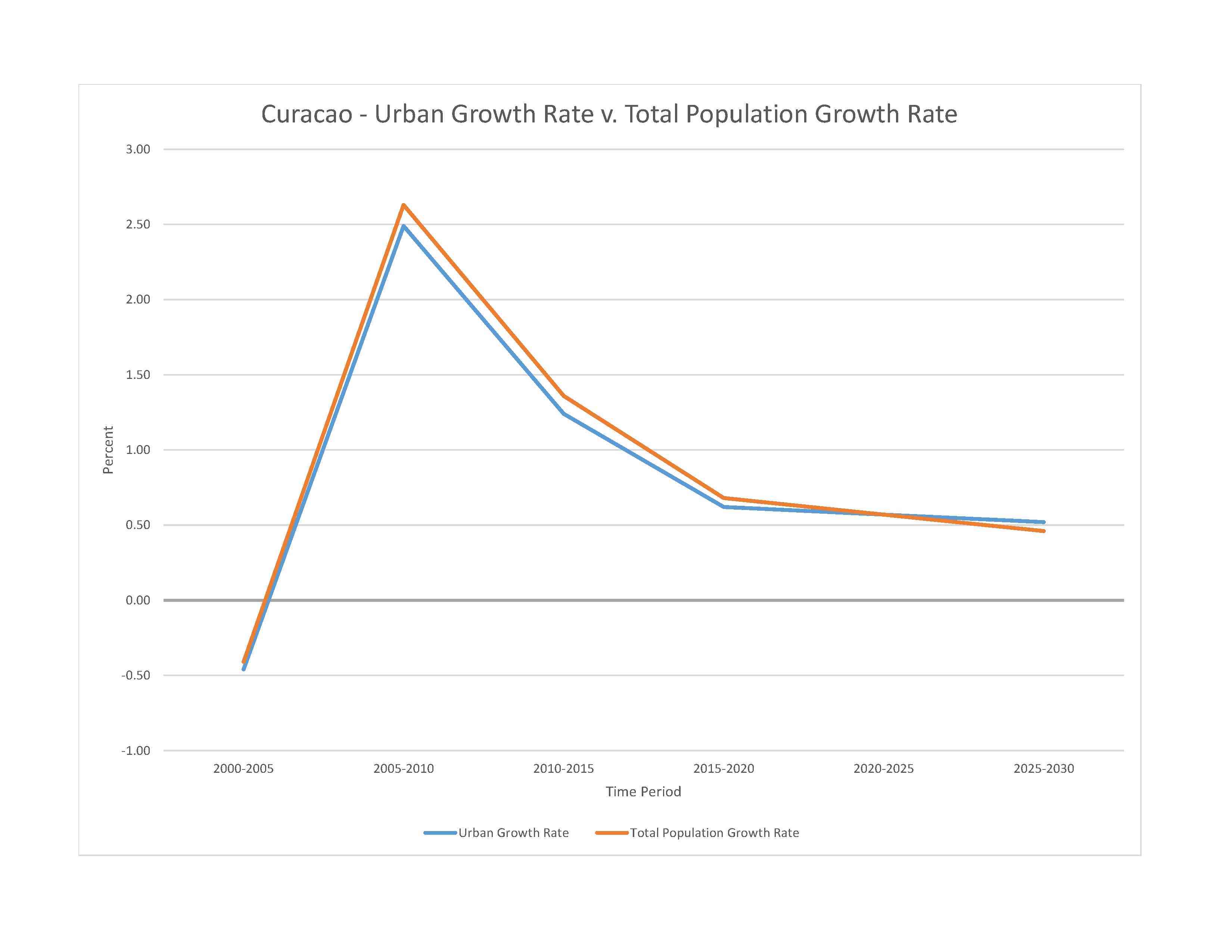
problems in waste management that threaten environmental sustainability on the island include pollution of marine areas from domestic sewage, inadequate sewage treatment facilities, industrial effluents and agricultural runoff, the mismanagement of toxic substances, and ineffective regulations; the refinery in Sint Anna Bay, at the eastern edge of Willemstad’s large natural harbor, processes heavy crude oil from Venezuela; it has caused significant environmental damage to the surrounding area because of neglect and a lack of strict environmental controls; the release of noxious fumes and potentially hazardous particles causes schools downwind to regularly close
tropical marine climate, ameliorated by northeast trade winds, results in mild temperatures; semiarid with average rainfall of 60 cm/year
agricultural land: 10% (2018 est.)
arable land: 10% (2018)
other: 90% (2018 est.)
urban population: 89% of total population (2023)
rate of urbanization: 0.57% annual rate of change (2020-25 est.)

0% of GDP (2018 est.)
0% of GDP (2018 est.)
carbon dioxide emissions: 5.39 megatons (2016 est.)
municipal solid waste generated annually: 24,704 tons (2013 est.)
municipal solid waste recycled annually: 494 tons (2013 est.)
percent of municipal solid waste recycled: 2% (2013 est.)
N/A
NOTE: The information regarding Curacao on this page is re-published from the 2024 World Fact Book of the United States Central Intelligence Agency and other sources. No claims are made regarding the accuracy of Curacao 2024 information contained here. All suggestions for corrections of any errors about Curacao 2024 should be addressed to the CIA or the source cited on each page.
This page was last modified 04 May 24, Copyright © 2024 ITA all rights reserved.